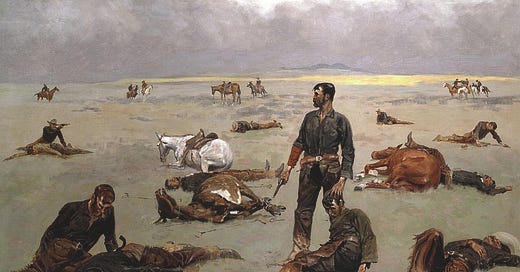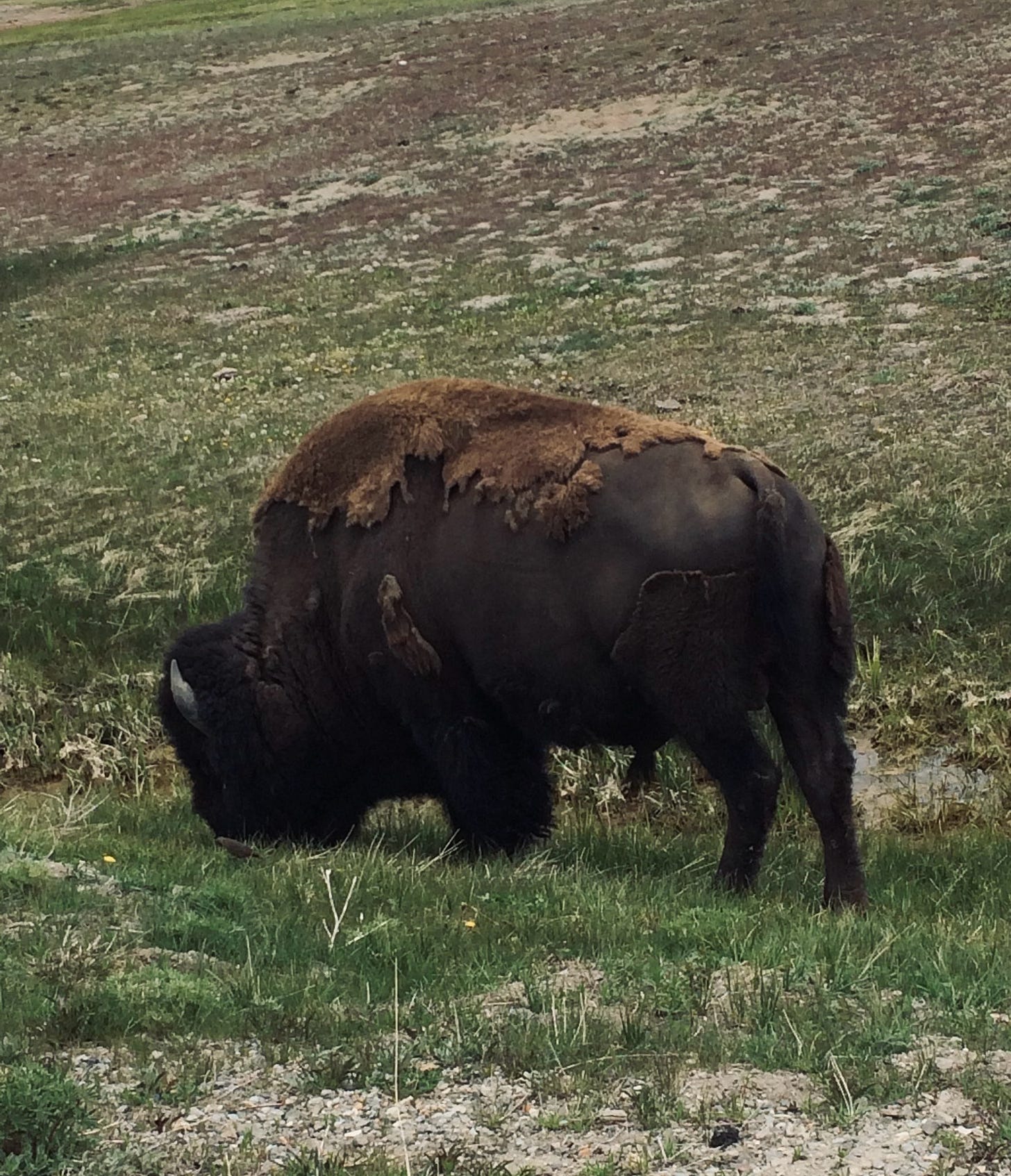In a time when man owned little, what did belong to him was borderline sacred. Material mattered not to the plainsman as chiefly as it did for his Native neighbor. For some, merely the tree bark, bear grease, and clay were enough to suffice.
Yet, for the man light in his pockets and soaked with sweat from the day’s cattle drive, his livelihood depended on just that: livestock and the moving thereof. It meant the difference between prosperity and destitution, miles away from home and family, surrounded by men of various stature, status, and condition. On the high end, a man could earn upwards of $1.25 daily in such a profession.
However, hours, days, nights, and weeks spent on the prairie were never intended for the faint-hearted or the ill. On that path, man chose his destiny to face the trial of both madness and sun-sickness, battling extreme inflammation, glove-smothered blisters, dehydration, and fever.
A decent day's drive aimed to be 10 to 12 miles, strung along with cooks in tow, who made up for what little meat a man could stow in a saddlebag when it came time to pitch a tent.
It’s easy to glamorize the life of the cowboys of old—cowboys in their originality and rite—summing them up in a picturesque profile. Still, no painting, film, song, or otherwise can grasp the endurance of the continuous wrestle within such a vocation. Many men found themselves bereft on the plain, drunken in rage, robbed by desperados, caught in a current, drowned under a stampede, or succumbing to a myriad of diseases.
More than that, man on the plain had his fair share of witnessing death and destruction, tribalism, egomania, cruelty, and carnal sin of the lowest kind.
Returning home, he might no longer have been the cowboy he set out as to begin with.
As gruesome as the matter was, it harkens to a time when traversing the plains on horseback reigned as the supreme mode of travel, not merely a means to an end but a way of life that demanded physical resilience and mental fortitude. Life was constantly in motion, slowly, yet perpetually in action, contrary to much of today’s preference for idleness.
More than the physical aspect, the image of a hardy frontiersman on his trusty steed never demonstrated more clearly the spiritual connection between man and Earth.
There is “life,” and there is “living.” It is a fact that those who took the opportunity—as the first man to behold such a treasure through the pines and prairies—had much to write, transmit, and carve into the cornerstones of history. He left his mark on the earth with every gallop and coin toss.
Despite all the greatness of the Old West, this does not call for a desperate reminisce on a time left behind, as if we are all old men and women floundering in the memories of our youth. Often, we see the swelling of young men today, all bloated with the idea of “returning” to what was; “returning” to a time that existed before even his grandparents.
Yet, in this era of technological wonders, we look back with rose-tinted glasses. We find ourselves in the Clutch of the Past, where many “Neo-Digital Natives,” more commonly known as “Gen Z,” trudge further away from the establishment and academia, venturing on the path of anecdotes and nostalgia.
It is an understandable gamble, as the allure of comfort often stretches one too thin, nudging many to the brink and into the depths of a collective unconscious, adrift in the lake that harbors thousands of yellow-bellied vipers unbeknownst to him. It remains crucial not to lose individuality in the sweeping obsession of what was, for in doing so, we risk forsaking the essence of our present, the core of our being.
In this digital era, technology acts as a siren, calling us back to a past we’ve never lived but can now see in vivid detail on our screens. It’s a curious blend of enlightenment and illusion, offering a tapestry of history at our fingertips while enticing us with a reminiscence that perhaps was not ours to start with; one should strive to craft a life rich in memorable moments, poignant tales, and a legacy that resonates today rather than living through the past.
As the bison walks ahead amid a snowstorm, facing the wind and the change it brings, it is in man’s best interest to do the same.
With all its glory and tales, the past deserves its reverence, but it should not be a delusion. There is much to be grateful for in this world, and one can very well pursue the antique adventures of cross-country trail riding, fishing the creek, or skinning and frying a rabbit.
Progress is not always destructive when equipped with steadfast faith and endurance. As one wise forefather once said:






This was quite good. Appreciate the reality faced; moreover the life graced.